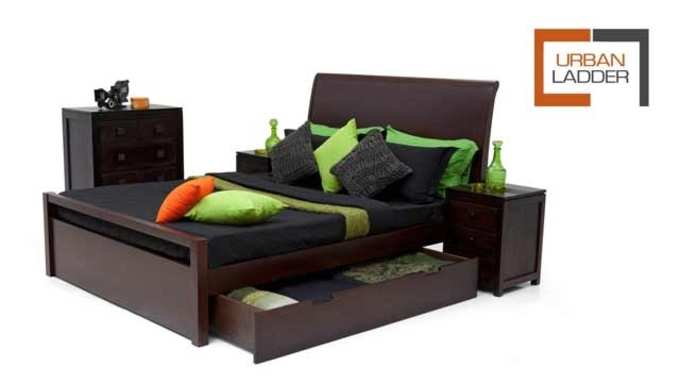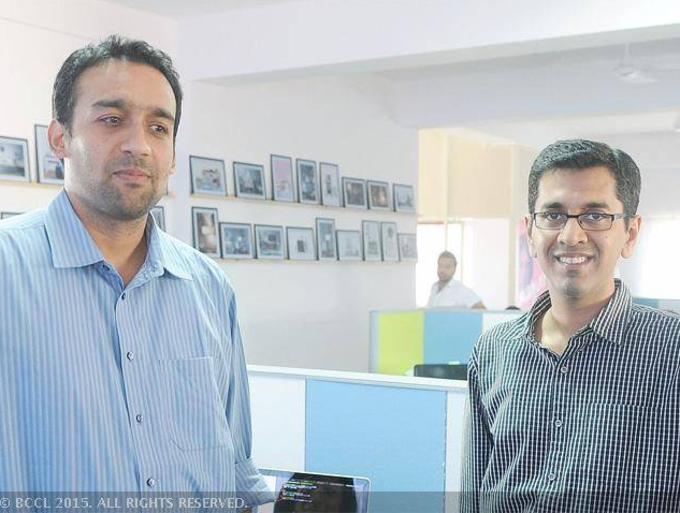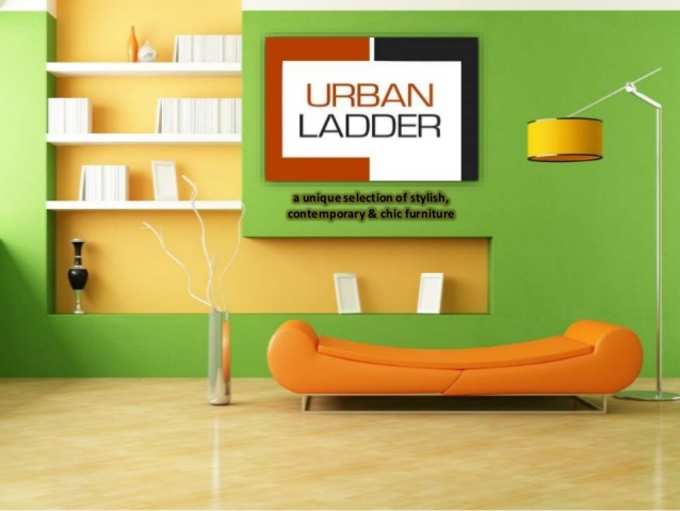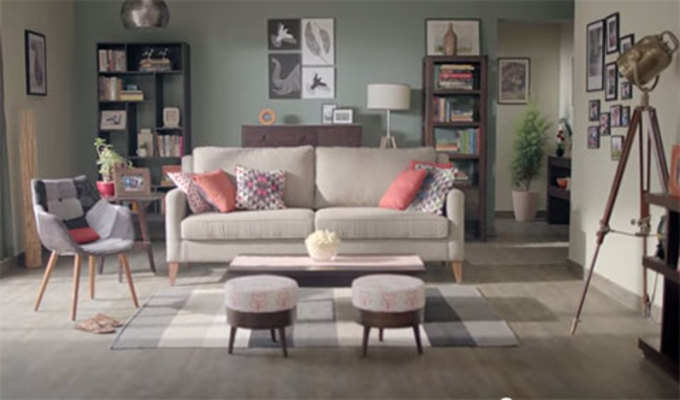
In July 2012,
“We decided to go online at a time when no one could even think that people would buy furniture on the internet,” says Srivatsa, highlighting the risk of their venture.
Thankfully for the duo, investors saw the Bangalore
Add their efficient customer service and beautifully designed products to the mix and four years later, UrbanLadder has managed to establish itself as India’s leading furniture and home decor destination.
The startup that raised 50 million in funds last year claims to be looking at another funding round next year of the same value with the hope of breaking even on their mind.
“From the $50 million that we’ve received last year, we intend to pump in $15 million this year to expand and stabilise our brand,” Srivatsa tells us.
An IIT and IIM graduate himself, Srivatsa, the COO and co-founder of UrbanLadder talks to Business Insider about leadership, company strategies, the startup ecosystem and how tough it is to hire the right candidate.

What was the idea behind starting an online furniture website like UrbanLadder?
Four years back, we started out with one thought, ‘India has a lot of homes. Can we make those homes beautiful?’
When you take a call to start a business based on that vision alone and not anything else, the way you go about your business is very different.
Our aim was to go about in a way so that the end product would be a beautiful home. This meant that we had to focus on three aspects in a very strong way. Those were-
1. We had to get a product that was fantastic: When I say fantastic, I mean it had to be designed well and in a way that you’re proud of. But, there was a catch. The beauty couldn’t come at a very high cost. The beauty had to come at a cost which was meaningful and a quality which was long-lasting, because Indian customers value the quality, right? So product and beauty of the product was a very very strong point.
2. Second comes the service: This is not one of those businesses where I just deliver the product outside the house and my job is done. It requires service as well. I need to help you install the product, arrange it in a way you like it and even help you take regular care of it. So essentially, in this category the service also becomes a part of the product. And, we had decided early on that our service needs to be top-notch so that the customer is worry-free.
3. The third aspect was technology: To ensure that UrbanLadder reached as many people in as many cities as possible, we had to take it online. And, here the quality of technology played a very big part as it would help the customers visualise how our products would fit into their space.
So, essentially brand UrbanLadder is nothing but an execution of these three aspects.
How do you think these three core aspects helped UrbanLadder stand out as compared to other brands?
The result of this was that we didn’t have to talk price or discounts. All that did the talking were our products. Giving discounts and indulging in crazy pricing would have made sense until a year back when people were still pumping money into businesses. It makes absolutely no sense right now because of the slowing down of the startup ecosystem and I’m proud that we stuck to our guts.
One decision that you’d taken in the early years that you wish you could undo?
We initially started with third party services for pour deliveries. The idea was to rely on these well established players and get them to help us with deliveries. But, it turned out to be quite a catastrophe and in one month we pulled back these delivery services from all over India and realised that we can’t make our brand happen if we depend on someone else. Our vision would go for a toss, our customer service score would go for a toss. So, we just decide to do it ourselves. That is how we started doing everything inhouse, right from the delivery to the installation.

What would you say are some strategies that help UrbanLadder grow as a brand?
Firstly, you would notice that any typical marketplace will generally have 50,000 or more products, but not us. We have a little over 4,000 products. That’s only because we don’t want to crowd our side with incessant product additions everyday but instead create value with each of our existing products. By having a slightly less number of products, we ensure that we’ve been thoughtful with every product that’s on the site.
The second thing that I believe has helped us is our clear perspective on how we want to grow year on year. Last year, our business grew 3x. This year, our aim is to grow 2.7 x. The following year we’re looking to grow around 2.5 x. The reason you don’t see us making claims of wanting to grow 5x or 4x is because we want to grow in a way that would actually help profitability and allow us to hold the customer service experience really strong.
UrbanLadder is about to complete four years of existence. What would you say are some of the decisions that has helped the brand through the years?
We’ve always stuck to a pricing which is reasonable to a sustainable economic situation and that decision has helped us in establishing a fundamentally sound business that can shoot for profitability in the next two years.
Does that also mean that you don’t take too many risks and play it safer than the others?
We see risk very differently. For us, any innovation related to our three aspects is a risk. For example we just introduced a very ethnic Indian range on our website. UrbanLadder has never done anything like this before, so for us this is out of our comfort zone.
We don’t want to have products that we later have to recall. We don’t want out customers to say, ‘I’m never going t buy this product’ Our aim to is to be very thoughtful with every product. That’s our priority.
Tell us how UrbanLadder incorporates technology in its operations?
Tech innovations are very important for us. Infact, we were the first ones to invest in AR/VR two years back.
We have an app called Living spaces where customers can look how our sofa looks in their living rooms with the help of augmented reality. It basically happens by superimposing the model on a camera and that’s been a big proponent of how we sell so fast. This helps customers figure out how a product would look n their space. A big challenge with AR is that you have to ensure it doesn’t look fake because your surrounding are real.

What would you say has worked for UrbanLadder that quite hasn’t for other players?
I think, the scale at which furniture is bought on our website is something that no other player can boast about. We’ve actually managed to get customers to shop for furniture online. Plus, no other player has even managed to come half at par with the level of service that we offer.
What are the areas you are looking to invest heavily this year?
Our focus like always is to be thoughtful more than anything. But there are a few things that are a priority for us this year. One of them is to leverage what we already have, and especially our new interior business.
Secondly, of late, sofas as a category are taking off so our aim is to have a wide range of sofas that are easily configurable.
Additionally, we are also changing the interface visually on the website so as to ensure the customer buying experience is very different.
Is hiring a difficult process for a company as unique as yours?
It’s tough to find the right candidate when you’re a startup. A lot of people are not okay with the possibility of their job being at stake even if they perform well, though the number of people who are open to joining start-ups are much more now as compared to four years back.
At UrbanLadder, what we try to do is instead of getting a lot of senior people on board, we look to hire MBA graduates with 2-3 years of experience and groom them in a way that they are able to make decisions tomorrow and face challenges. We have only 3-4 senior people in the company.
I believe, the media plays a big role here. They should start talking about stuff other than funding news. We need more success stories, learnings, how entrepreneurs have solved problems to get people to broaden their view of
How do you think IKEA’S entry into the Indian market will affects players such as UrbanLadder?
I’d like to believe that the Indian furniture market is big enough for every player to fit in. But, it all depends on execution. IKEA is a fantastic brand and their execution is top-notch so the challenge for us is to hold on to our value propositions, execute and innovate well.
Have you thought about entering the office interior space?
Not as of now. I mean, it is a massive opportunity, no doubt, But it’s also a very different segment that requires different products. But, I’ll never say never.